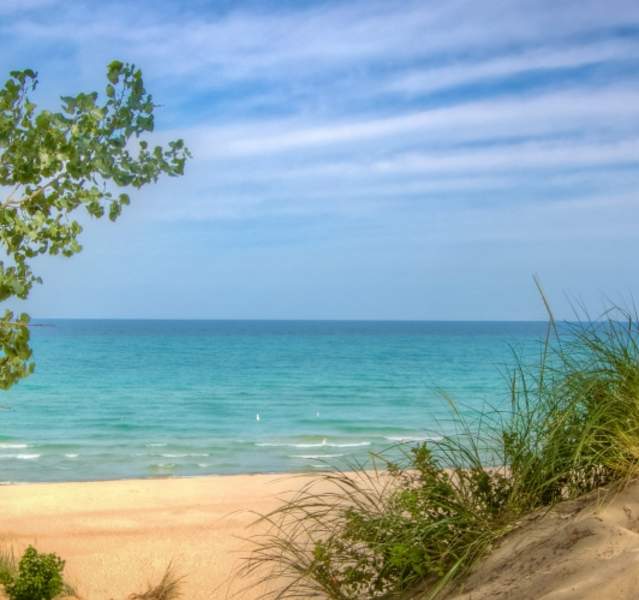Indiana Dunes Flower Quest—JULY
Not all of the fireworks are up in the air during the month of July! The Indiana Dunes are bursting with wildflowers of all shapes and colors. Flowers are blooming in the wetlands from West Beach to Cowles Bog, so check out our “July Hotspots” below, and then head outdoors to see how many of these treasures you can spot before they’re gone!
Visit the Indiana Dunes Flower Quest homepage for important information, and then grab your camera and hit the trails! Be sure to share pictures of the treasures you spy at #DunesFlowerQuest.
![]()
Be sure to tag @indianadunes and use #dunesflowerquest.
Need some help identifying your discoveries? Try identify.plantnet.org.

Butterflyweed
Did You Know?:
Butterfly weed (or Butterfly Milkweed), a common plant with an uncommonly beautiful flower, is found throughout the midwest and the plains. It’s also an incredibly useful plant! Native Americans used fibres from its dried stems for rope and clothing, and its medicinal qualities earned it another common nickname, Pleurisy Root. Oh, and in spite of its name, it really doesn’t have milky sap, although butterflies do like its lovely flowers!
Reference the Quest Map to help guide you to this flower.
Buttonbush
Did You Know?:
This unique flower looks a little like a golf ball with delicate spines all over it (or some say a pin cushion!), but it’s actually a sphere of tightly clustered white blossoms. The buttonbush grows in wetlands and other low-lying areas, and its seeds are a favorite for ducks and shorebirds. In bloom, it attracts butterflies, and because bees also enjoy it, it’s also called a honey-bell!
Reference the Quest Map to help guide you to this flower.

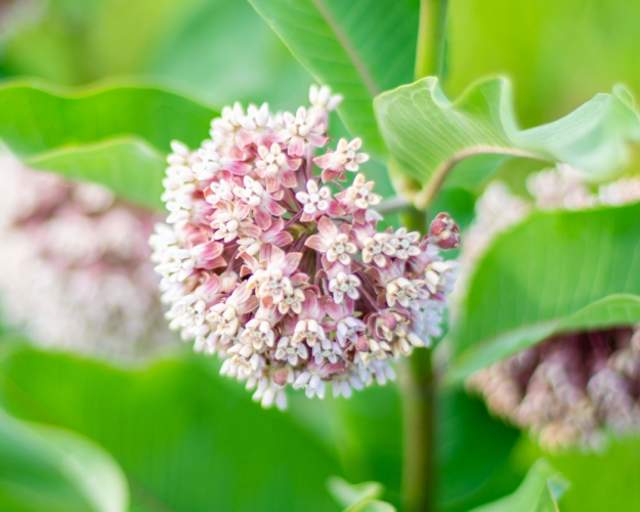
Common Milkweed
Did You Know?:
There is nothing common about this wonderful plant: it feeds over 450 species of insects, and it is the crucial food source for monarch butterfly larvae. In fact, the common milkweed produces a chemical that, when consumed by the monarch, helps it deter predators by making it mildly toxic to birds. Planting milkweed in your garden is a simple step you can take to help these wonderful butterflies, and you’ll be glad you did–the milkweed produces lovely clusters of pink and purple flowers, and they smell wonderful!
Reference the Quest Map to help guide you to this flower.
Daisy Fleabane
Did You Know?:
With its white petals and yellow florets in the center, this member of the aster family definitely lives up to the daisy in its name, although its flea-repellent nature is the stuff of stories and superstition. Still, it does attract a number of small bees and flies, and although its flowers look delicate, this hardy plant can thrive in a number of environments, even along roadsides, and can help stabilize soil and protect against erosion.
Reference the Quest Map to help guide you to this flower.
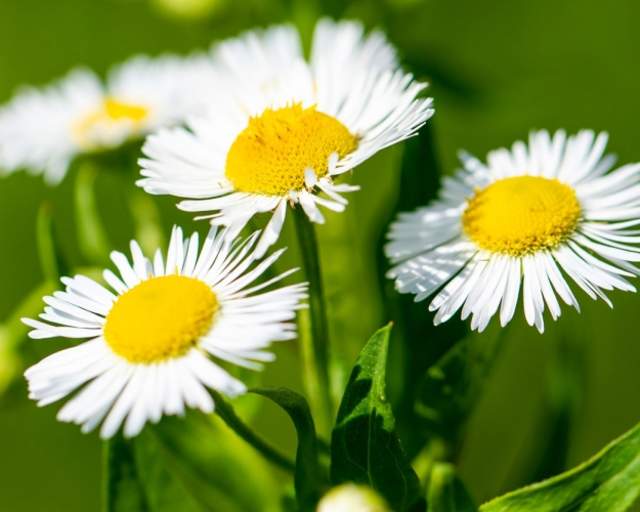
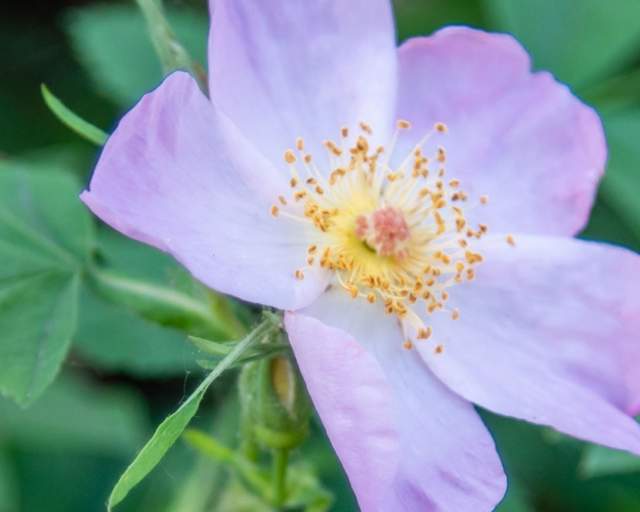
Dog Rose
Did You Know?:
This attractive pink flower is native to Europe and Asia, and can now be found on both coasts and throughout the midwest. Given its beauty, the name might seem puzzling: it harkens back to a Roman naturalist named Pliny, who wrote that the name stems from the belief that the root of the plant could cure the bite of a rabid dog!
Reference the Quest Map to help guide you to this flower.
Flowering Spurge
Did You Know?:
This plant with numerous small white flowers grows in a variety of soils, and gets its name from the latin word for “to purge,” a reference to its early use in addressing stomach ailments. This toxic plant is hardly medicinal, however: Contact with it can cause everything from redness to blisters, and it can even be fatal to cattle if consumed in large quantities. This is definitely a beauty worth admiring from a distance!
Reference the Quest Map to help guide you to this flower.


Lizard's Tail
Did You Know?:
This unique plant can grow up to four feet tall, and it gets its name from its distinctive drooping (or nodding) stalk covered with small white flowers. It thrives in wetlands, and is also known as the “water dragon,” making it a perfect part of the Flower Quest!
Reference the Quest Map to help guide you to this flower.
Purple Bergamot
Did You Know?:
These native wildflowers are found in the eastern half of the United States, and they are actually a part of the mint family, making their leaves quite fragrant when crushed. With their tubular purple flowers, they are favorites of bees, butterflies, and even hummingbirds, and their seeds provide food for goldfinches and other birds.
Reference the Quest Map to help guide you to this flower.


Purple Pitcher Plant
Did You Know?:
Pitcher plants are one of the few native carnivorous plants, and they get their name from their pitcher-like shape. These amazing plants capture rainwater in the base of their flowers, and when an insect crawls into the pitcher, small hairs on the petals keep it from leaving. When the unlucky victim falls into the water below, enzymes produced by the plant dissolve the insect so the plant can consume its nutrients. Incredibly, as lethal as that sounds, the pitcher plant also provides a safe haven for the larvae of two different species of mosquitoes!
IMPORTANT: Purple Pitcher Plants can only be seen at Pinhook Bog, which is only accessible via ranger-led open houses on summer weekends.
Reference the Quest Map to help guide you to this flower.
Starry Campion
Did You Know?:
These lovely white flowers are related to carnations, and sometimes the blossoms are so large the plants droop from the weight! Although it produces no real aroma, it is a favorite of a number of moths.
Reference the Quest Map to help guide you to this flower.


Tamarack Rose
Did You Know?:
We don’t often associate wildflowers with pine trees, but the tamarack isn’t like other pine trees! Not only does it lose its needles in the fall, but its delicate pinecones resemble roses as they begin to grow. They thrive in wetlands and bogs, making them quite at home in Pinhook Bog.
IMPORTANT: Tamarack can be seen at Pinhook Bog, which is only accessible via ranger-led open houses on summer weekends.
Reference the Quest Map to help guide you to this flower.
Water Lily
Did You Know?:
The beautiful white flowers of the water lily are a beautiful and fleeting sight: only a few days after opening, when the plants have pollinated and been pollinated, they disappear under the water, where the plants’ seeds mature. The currents and waterfowl then disperse the seeds. Because of their wonderful aroma, they are also known as the “Fragrant water-lily.”
Reference the Quest Map to help guide you to this flower.


White Beakrush
Did You Know?:
These distinctive plants have flowers that grow in small, spiky clusters at the top of their stems. The white beakrush thrives in the relatively inhospitable soils of bogs and fens, and it gets its name from the beak-like shape of its seeds.
IMPORTANT: White Beakrush can be seen at Pinhook Bog, which is only accessible via ranger-led open houses on summer weekends.
Reference the Quest Map to help guide you to this flower.
More Things to See & Do
Outdoor Adventures
Shaped by nature, made for adventure. In the Indiana Dunes, it’s all about fun times and tan lines—from…
Dunes Deals
Shake off the sand south of the Indiana Dunes! Dig up real savings with Indiana Dunes Deals and make the most of…
Indiana Dunes Shop
Don’t just experience the Indiana Dunes; take it home with you. Find your new favorite T-shirt, hoodie, or…
Pet Friendly
There’s a reason Indiana Dunes National Park was named the #1 pet-friendly attraction in the state of Indiana…
Arts & Entertainment
It’s not all sand-fringed lakes and epic sunsets. Here, you’ll find a vibrant arts scene stoked by a…
Drop-in Volunteering
Be the Change — Volunteer! Get more involved with the Indiana Dunes!

July Hot Spots
Please note that Pinhook Bog is only accessible via guided tour and some West Beach wetlands are visible from the trail edge only.
The story of the monarch butterfly is one of incredible transformation and epic travel. We are also part of this adventure, and each of us can play a key role in the survival of the monarch…
Plant Your Own Monarch Garden


15% Off
Applies to native plants and monarch butterfly plants. Valid on regularly priced plants, shrubs, and trees only. Show this coupon at the register.
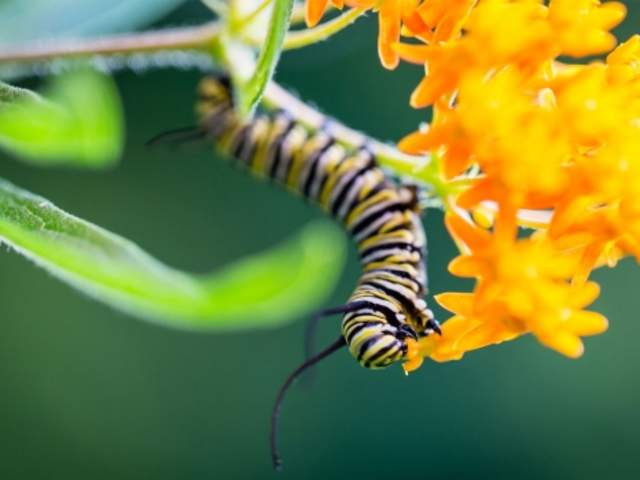

15% Off
Applies to native plants and monarch butterfly plants. Valid on regularly priced plants, shrubs, and trees only. Show this coupon at the register.
Book a Place to Stay
Bed & Breakfasts
Feel like family with intimate accommodations that range from nature-inspired retreats in the woods…
Hotels & Inns
A convenient stay located near downtown? What about a country retreat heaped in Old World charm? Or…
Tales from the Dunes
Indiana Dunes Blog
Indiana Dunes National Park is 5th in the nation for biodiversity. That’s more than Yellowstone, Grand Teton, and the Everglades. Read more about monarchs and other diverse flora and fauna.
Sounds of the Prairie at Kankakee Sands
- 3 minute read
This spring and summer, I have been enjoying the call of the grasshopper sparrow—a dry, insect-like buzz that…
Spotlight on Wetlands and the Virginia Rail
- 5 minute read
Spring has sprung and that means our Kankakee Sands wetlands are teeming with activity. The Kankakee Sands Bird…
Why We Should Try to Appreciate Spiders
- 5 minute read
Did you know that the first week of April is National Be Kind to Spiders Week? To be kind to spiders (that is, to…
Interesting Facts About the Indiana Dunes
- 6 minute read
There's more to the Indiana Dunes than warm sand, blue water, and miles of hiking trails. For example, as of…
Walking in a Winter Wonderland
- 5 minute read
It’s December, and I find myself singing along to all the holiday songs on the radio and playing in the…
